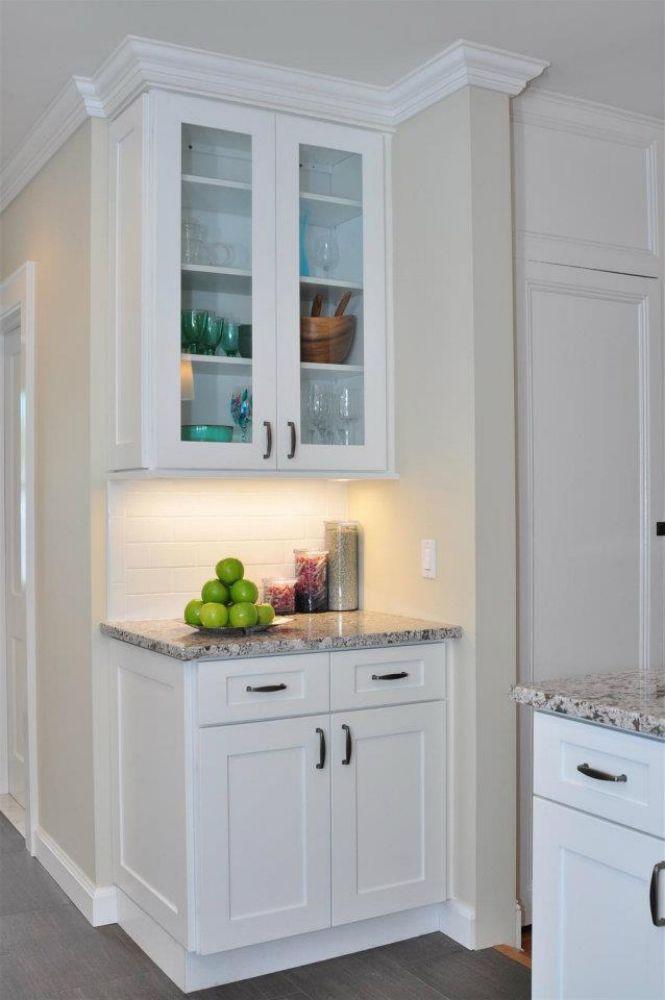When selecting cabinetry, homeowners often find themselves torn between light neutral finishes like Forevermark Petit Sand and darker tones such as espresso or deep wood finishes. Both styles bring unique charm and personality to a kitchen or living space. However, the growing popularity of lighter shades, especially Petit Sand, has sparked the question: Is it truly better than dark cabinetry? This article explores the comparisons, benefits, and design implications of choosing Petit Sand over espresso or darker wood tones.
Understanding Forevermark Petit Sand Cabinets
Forevermark Petit Sand belongs to the Forevermark Cabinetry line, known for offering affordable, durable, and stylish cabinetry. The Petit Sand finish is a light beige-gray tone that provides a warm, neutral, and airy aesthetic. Unlike stark white finishes, Petit Sand carries subtle warmth, making it versatile and easy to pair with other design elements.
The shaker-style profile of Petit Sand emphasizes clean lines, making it a top choice for homeowners seeking modern simplicity with timeless appeal.
The Appeal Of Espresso And Dark Wood Tones
On the other side of the spectrum, espresso and dark wood tones are traditionally associated with luxury, sophistication, and bold design statements. These cabinets create dramatic contrast in kitchens and often exude warmth when paired with lighter countertops or flooring.
Dark finishes have long been used to achieve traditional, rustic, or contemporary aesthetics, but they come with unique considerations, such as lighting, maintenance, and space perception.
Comparing Style And Aesthetic Impact
When deciding between Petit Sand and dark wood tones, style and aesthetic impact are primary considerations.
-
Petit Sand makes spaces feel larger, brighter, and more open. It is ideal for smaller kitchens or areas with limited natural light.
-
Espresso and dark woods add drama, depth, and richness, but they can make small or dimly lit kitchens appear cramped or heavy.
For homeowners seeking airy and inviting spaces, Petit Sand holds the advantage. For those wanting a moody, sophisticated, or bold ambiance, dark cabinetry may be the better match.
Light Reflection And Space Perception
Color directly affects how a room feels.
-
Petit Sand reflects natural and artificial light more effectively, giving the illusion of more space.
-
Dark wood tones absorb light, which can reduce brightness and make a room feel more intimate but smaller.
This makes Petit Sand a practical choice for urban apartments, condos, or smaller kitchens, while dark finishes may suit larger, open-concept layouts.
Maintenance And Cleanliness
Another important factor is how cabinets handle wear and tear over time.
-
Petit Sand is less likely to show dust, fingerprints, and small scratches compared to darker finishes.
-
Espresso and dark woods often reveal smudges, grease, and dust quickly, requiring more frequent cleaning to maintain a polished look.
For families or busy households, Petit Sand may offer lower maintenance and easier upkeep.
Versatility In Design Pairings
The versatility of Petit Sand cannot be overlooked. Its neutral tone pairs beautifully with a wide variety of design elements:
-
Countertops: Works well with marble, quartz, granite, or butcher block.
-
Backsplashes: Complements subway tiles, glass mosaics, and patterned ceramics.
-
Hardware: Matches with brushed nickel, chrome, brass, or matte black finishes.
Dark wood tones also provide strong contrast opportunities, particularly with light countertops and bold hardware. However, Petit Sand has broader compatibility, making it more adaptable to transitional and modern kitchens.
Resale Value And Market Trends
Market trends increasingly favor lighter tones, including white, off-white, and light gray cabinetry. Forevermark Petit Sand aligns perfectly with this demand, making it a wise investment for homeowners concerned about resale value.
Dark wood tones, while still admired by certain buyers, are seen less frequently in modern listings. Homes with light-toned cabinetry often appeal to a wider audience because they create the sense of a fresh, clean, and move-in-ready space.
Emotional And Psychological Effects
Colors in the home influence mood and perception.
-
Petit Sand promotes a calming, open, and welcoming environment.
-
Espresso and dark woods evoke warmth, sophistication, and intimacy.
Choosing between the two depends on whether a homeowner prioritizes serenity and openness or richness and coziness in their kitchen environment.
Durability And Construction Quality
Both Petit Sand and dark wood tones from Forevermark maintain the brand’s high construction standards. They feature:
-
Solid wood frames.
-
Plywood box construction.
-
Soft-close hardware.
The primary difference lies in finish durability. Lighter tones like Petit Sand can sometimes show stains if not cleaned quickly, while darker finishes may display scratches more prominently. Both, however, are built to withstand years of use with proper care.
Design Suitability For Different Spaces
The best choice also depends on the specific room and layout.
-
Petit Sand: Ideal for kitchens, bathrooms, laundry rooms, and smaller spaces where brightness is needed.
-
Dark wood tones: Excellent for home offices, large kitchens, or entertainment areas where a dramatic and formal atmosphere is desired.
This flexibility ensures both finishes have their place, but Petit Sand often edges out for general family-friendly spaces.
Energy Efficiency And Lighting Costs
Because Petit Sand reflects light more effectively, it may reduce the need for additional artificial lighting, lowering energy costs in the long run. Dark cabinetry may require stronger or more frequent lighting to prevent rooms from feeling too dim.
For eco-conscious homeowners, this is a subtle yet notable advantage of lighter cabinetry finishes.
Conclusion
Forevermark Petit Sand offers a bright, versatile, and low-maintenance alternative to espresso and dark wood tones. Its ability to reflect light, make spaces feel larger, and pair effortlessly with a variety of design elements makes it especially suitable for modern households. While dark wood tones remain timeless in their richness and sophistication, Petit Sand better aligns with today’s trends, homeowner needs, and real estate market preferences. For most families, Petit Sand proves to be the more practical and forward-thinking choice, though personal style will always play the deciding role.
Frequently Asked Questions
Q1: Is Petit Sand too light to hide everyday wear and tear?
A1: No, Petit Sand is a forgiving neutral tone that hides dust and fingerprints better than darker finishes.
Q2: Can Petit Sand cabinets be paired with dark countertops?
A2: Yes, pairing Petit Sand with dark granite or quartz creates a balanced and modern contrast.
Q3: Are dark wood cabinets outdated in modern kitchens?
A3: Not necessarily, but lighter tones like Petit Sand are currently more popular and marketable.
Q4: Which finish is better for small kitchens—Petit Sand or espresso?
A4: Petit Sand is typically better, as it reflects light and creates the illusion of more space.
Q5: Do Petit Sand cabinets work in traditional-style homes?
A5: Yes, their shaker profile blends seamlessly into traditional, transitional, and modern home designs.

